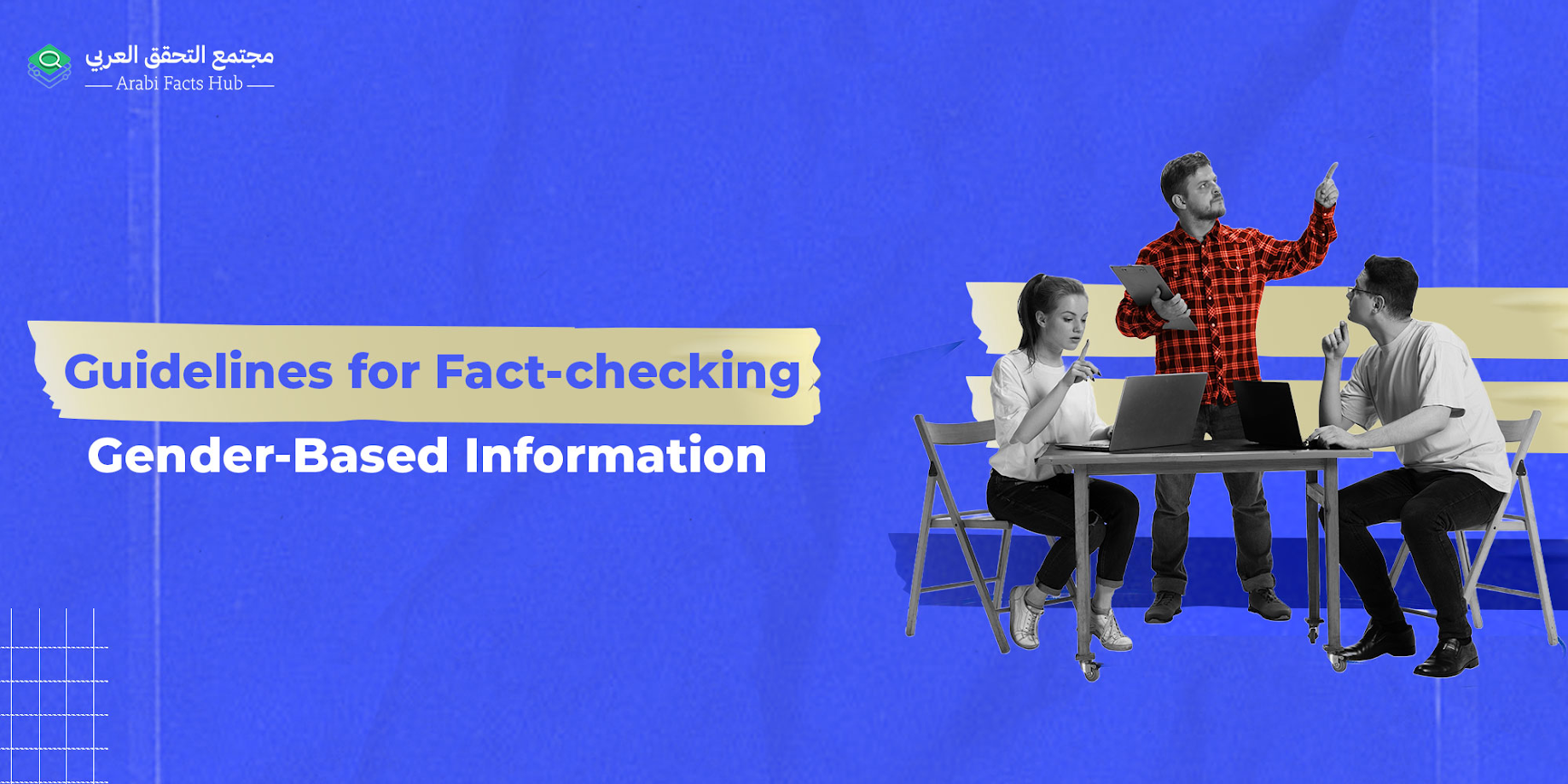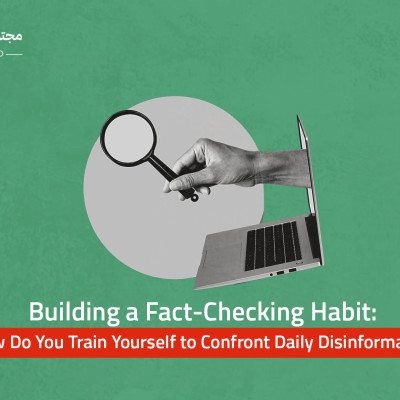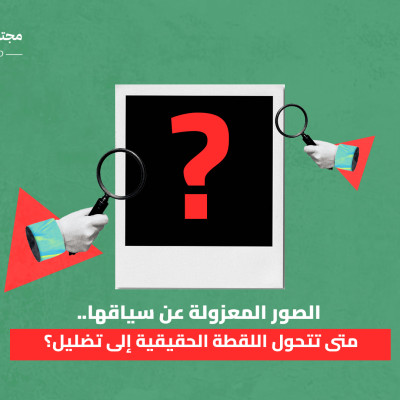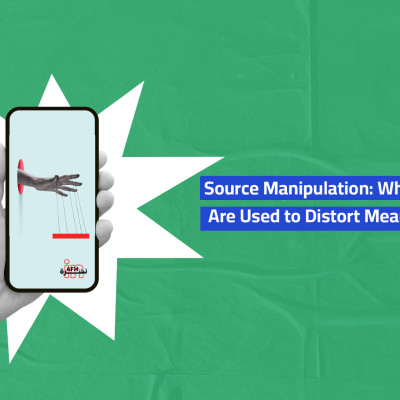Guidelines for Verifying Gender-based Information

A common mistake is the belief that gendered disinformation is only directed against women in attempts to undermine them or stereotype their role in society according to misogynistic narratives. In reality, gendered disinformation targets both sexes as men have also often fallen victim to it.
The Internet Governance Forum defines gendered disinformation as false information that is created to “attack or undermine people based on their gender, or weaponize gendered narratives for political, social or economic objectives.”
Gendered disinformation often intersects with technology-facilitated gender-based violence, which occurs through digital and technological platforms and targets individuals based on their gender. This type of violence involves the use of technology to commit acts that include harm or defamation, resulting in damage to individuals based on their gender.
Forms of disinformation associated with gender-based violence include:
- The creation or distribution of misleading or harmful information or images that target individuals based on their gender.
An example of this is the report by Arabi Facts Hub titled "Smear Campaign against the Arish Student Led by Accounts Affiliated with the Egyptian Regime" The report analyzed a coordinated campaign aimed at tarnishing the reputation of an Egyptian girl who passed away earlier this year, with the goal of undermining public sympathy for her.
- The use of stereotypes and gender-based profiling.
An example is the report by the Yemeni platform "Saddaq" (Believe) titled "A Doctored Image of Judge Sabah Al Alwani Returning from Travel." The report shows how a Yemeni judge was - through the use of photoshopped images - falsely accused of undergoing cosmetic surgeries at the state's expense, exploiting her position. Those behind the campaign promoted stereotypes about women, claiming that their interests are limited to cosmetics.
- The use of hate speech and evolving it into incitement and hostility based on disinformation.
- Targeting women with intersecting identities i.e. those belonging to racial or religious minorities.
A report by the platform “Heya Tatahaqaq” (She Checks), titled "Disinformation Fuels Hate Speech Against Algerian Athlete Imane Khelif," addressed the campaign targeting the Algerian Olympic boxer, Imane Khelif. The campaign spread false information about her biological sex and made claims about her being transgender.
- Undermining someone’s capabilities solely based on their gender.
An example of this is highlighted in Arabi Facts Hub’s report titled "Not Cut for It: Female Presidential Candidates in Algeria Face an Electronic Discrimination Campaign." The report discusses the discriminatory online campaign targeting female candidates in the 2024 Algerian presidential elections. It demonstrates how the campaign aimed to tarnish the reputations of the candidates and discriminate against them simply because they are women. This was done through promoting the belief that leadership positions are not for women and that men are more deserving, regardless of the women's qualifications, capabilities, or electoral platforms.
[Read more: The ethical coverage of gender-related issues]
A methodology for detecting gender-based disinformation
Ruwayda Al Arabi, founder of the “Heya Tatahaqaq” platform (She Checks), which specializes in fact-checking, advises analyzing the content of a message to determine if it specifically targets women. It is important to examine whether the message is directed against female figures or addresses issues directly related to gender, such as gender rights.
According to Al Arabi, the fact-checker should then delve into understanding the underlying motives and purpose of the message, which may involve undermining women or reinforcing gender stereotypes. It is also essential to investigate the identity of the entity behind the dissemination of this information and determine if there is a pattern of repeated content aimed at discrediting or defaming women by that source.
What skills are needed to uncover gendered disinformation campaigns?
First, mastering general fact-checking skills, learning how to track coordinated campaigns involving inauthentic activity, and using digital tools to verify popular written content, images, videos, as well as AI-generated and deepfake material.
You can read an educational article by Arabi Facts Hub which explains how to analyze the content of coordinated campaigns here: Methodology and Tools for Detecting Inauthentic Online Campaigns.
Second, understanding the concept of hate speech related to disinformation, how to detect and verify it, and the key tools to analyze it.
Third, utilizing open-source databases related to women and gender minorities to reveal the reality of their political representation, economic conditions, and to understand social media platforms' policies for handling gender-based misinformation, as well as local and international laws and agreements that address gender-based violence in all its forms.
Data sources to reference when preparing gender-related reports:
1. Academic Research:
- Google Scholar is a suitable option for academic research. It supports advanced searching, allowing you to specify geographic and temporal ranges and include or exclude certain keywords. It also provides citation methods and documentation for sources.
- Additionally, ResearchGate can be used to access research based on sound methodology. It is free, although some studies may require payment to access the full text rather than just the abstract.
2. Specialized Databases:
- The interactive map published by the Arab Women Organization illustrates the role of Arab women in political life. This map allows users to search by country to determine the percentage of women in ministries and the representation of women in parliament.
- The Arab Women Organization's database, "Bright Marks in Women's History," highlights women's contributions and documents the work of pioneering women. This database allows searches by year, keywords, and the names of female figures.
- United Nations databases enable research on cross sectional issues involving women and allow keyword searches related to development, security and peace, economic status, conflicts, wars, and more.
- The World Bank's Gender Data Portal provides comprehensive data on gender-related statistics, including workforce participation, political representation, and economic indicators related to women in various countries.
- Arab Barometer offers survey data and reports on social, political, and economic issues in the Arab world, including topics related to gender, such as women's political participation and perceptions of gender equality. The Arab Barometer describes itself as an independent research network that has conducted public opinion surveys in the Arab world since 2006.
- The UN Women - Arab States website provides a range of reports and data on gender equality, women's empowerment, and violence against women in various Arab countries.
- The World Economic Forum's Gender Gap Report has detailed data and rankings on gender equality across various indicators, including political empowerment, economic participation, and education in the Middle East and North Africa.
- The Women, Peace, and Security Index analyzes the status of women annually based on three dimensions: inclusion, justice, and security. It includes subcategories such as education, labor market, gender-based violence, and empowerment.
Tips for writing reports on fact-checking gendered disinformation campaigns:
- Understanding the Social and Cultural Context
According to the She-Checks platform, the most important tip for preparing reports on gender-based misinformation is to understand the cultural and social context before verifying any information. This knowledge helps identify the potential reasons for misinformation and why it may spread in one country more than another as well as helps the writer clarify this context for the reader.
- Using Gender-Sensitive Language
This is using terms that groups prefer to be called, such as “transgender individuals” instead of “transsexuals,” and referring to “child or minor marriage” instead of just “marriage,” as it reflects the coercion involved in the violation. It is better to say “familial rape” (incest) instead of “familial fornication”, which carries a stigma against the party in a vulnerable position. Additionally, it is important to avoid blaming victims or condemning those in vulnerable positions, and to refrain from mentioning information that may cause them social stigma or reduce empathy for survivors, such as making reference to women's clothing in cases of harassment or assault.
- Always Prioritizing the Safety of Participants and Sources
This involves anonymizing names, concealing images, and altering voices if the participant appears in a video or podcast. It is also important to avoid providing any information that might reveal the participant’s identity or mentioning details that could expose them to violence, targeting, or legal repercussions.
According to the Dart Center's guidelines, the rights of victims and survivors to refuse documentation, filming, or recording should be respected. Avoid pressuring or persuading them, and consider the impact of recalling incidents on their well-being. Additionally, avoid any questions that implicitly blame survivors or suggest they should have acted differently, such as, “Why did you post a controversial statement?” or “Why didn’t you speak out publicly and defend yourself?”
[Read more: A Guide for Journalists to Write Stories on Gender and Climate Change]
- Gender Representation Balance
Ensure the representation of women and gender minorities, and directly quote them while showcasing their experiences and the impact of misinformation on them. It is also important to strike a balance by ensuring representation from women as experts, and not just as victims of disinformation.
- Highlighting Actual Impact
Focus on the consequences of online misinformation, hate speech, or incitement against individuals in the real world. Investigate whether these actions have led to targeting individuals of a specific gender or resulted in violence, whether at the community level or by specific entities. Additionally, examine if this misinformation has influenced policies.
- Legal and Legislative Knowledge
Familiarize yourself with international charters, laws, agreements, and constitutions, especially provisions that relate to women and gender minorities, to accurately assess the legality and legitimacy of the actions in question.
- Responsibility of Social Media and Digital Platforms
Social media platforms' policies regarding hate speech, misinformation, or gender-based incitement must be analyzed and evaluated to examine responsiveness and adherence to these policies, as well as the gaps and challenges of these policies.
This article is published in collaboration with Ijnet









